Discover 11 hidden attractions, cool sights, and unusual things to do in Alaska Peninsula National Wildlife Refuge (United States). Don't miss out on these must-see attractions: Mount Pavlof, Pavlof Sister, and Chignik. Also, be sure to include Mount Veniaminof in your itinerary.
Below, you can find the list of the most amazing places you should visit in Alaska Peninsula National Wildlife Refuge (Alaska).
Table of Contents
Mount Pavlof
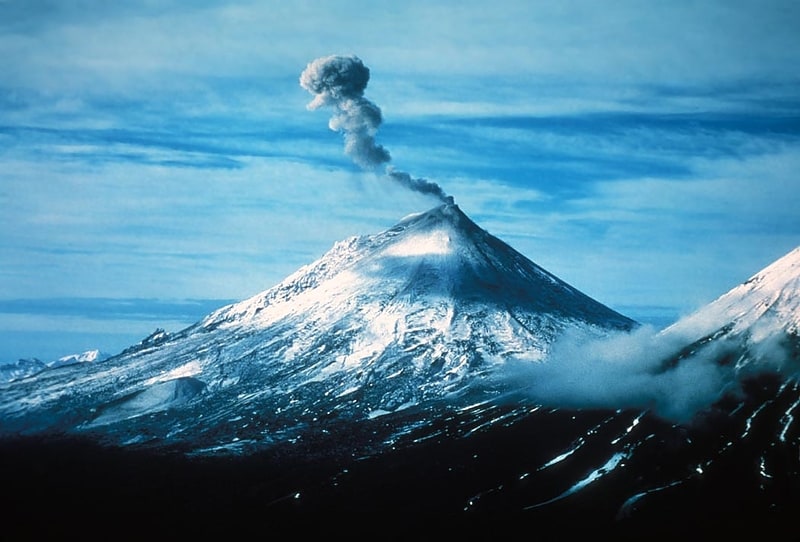
Stratovolcano in Alaska. Pavlof Volcano is a stratovolcano of the Aleutian Range on the Alaska Peninsula. It has been one of the most active volcanoes in the United States since 1980, with eruptions recorded in 1980, 1981, 1983, 1986–1988, 1996–1997, 2007, 2013, twice in 2014, 2016, and is currently erupting as of August 2021. Basaltic andesite with SiO2 around 53% is the most common lava type. The volcano is monitored by the Alaska Volcano Observatory- a joint program of the United States Geological Survey, the Geophysical Institute of the University of Alaska Fairbanks, and the State of Alaska Division of Geological and Geophysical Surveys. With a threat score of 95, the threat from future eruptions is considered to be high; much of this threat comes from the possibility of disruption of nearby air routes by large releases of ash. The mountain currently has basic real-time monitoring, but the USGS would like to improve instrumentation at the site. The mountain shares a name with the nearby Pavlof Sister, which last erupted in 1786.[1]
Pavlof Sister
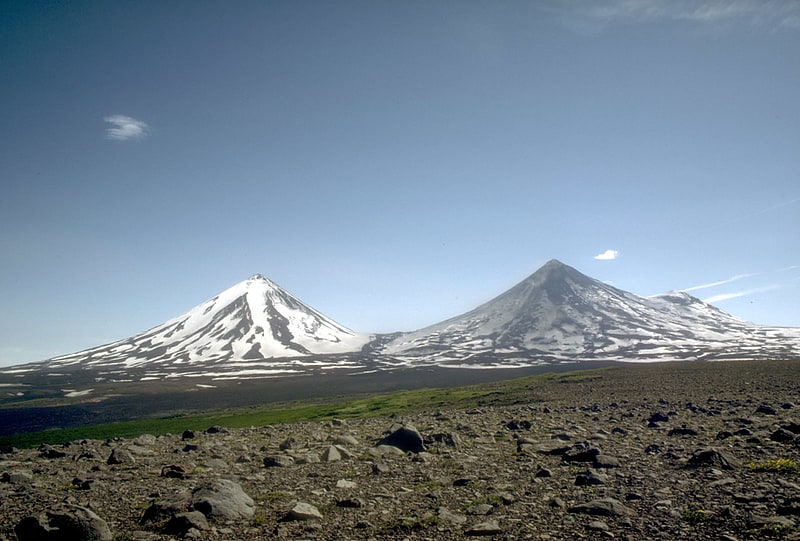
Stratovolcano in Alaska. Pavlof Sister is a stratovolcano on the Alaska Peninsula. It is a satellite peak of Mount Pavlof, lying directly northeast. The mountain was named by the USGS in 1929. It is considered dormant, as it last erupted in 1786. USGS has the volcano alert level of Pavlof Sister set to unassigned, meaning the volcano is not currently monitored.[2]
Chignik
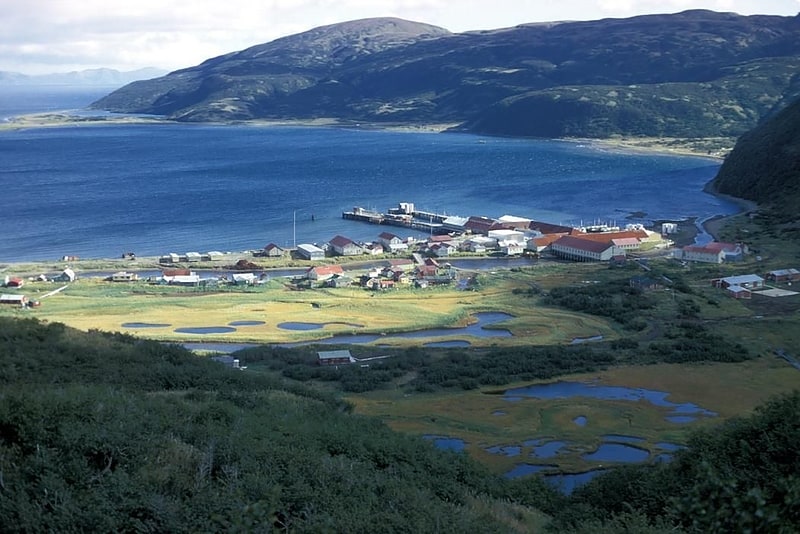
City in Alaska. Chignik is a city in Lake and Peninsula Borough, Alaska, United States. It is two hundred and fifty miles southwest of Kodiak. At the 2020 census the population was 97, up from 91 in 2010.[3]
Mount Veniaminof
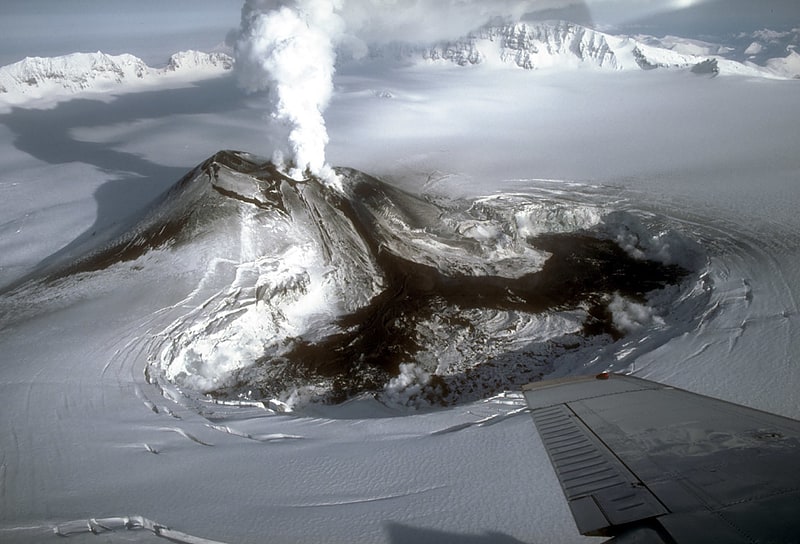
Stratovolcano in Alaska. Mount Veniaminof is an active stratovolcano on the Alaska Peninsula. The mountain was named after Ioann Veniaminov, a Russian Orthodox missionary priest whose writings on the Aleut language and ethnology are still standard references. He is a saint of the Orthodox Church, known as Saint Innocent for the monastic name he used in later life.
The volcano was the site of a colossal (VEI 6) eruption around 1750 BCE. This eruption left a large caldera. In modern times the volcano has had numerous small eruptions (over ten of them since 1930), all at a cinder cone in the middle of the caldera.
Veniaminof is one of the highest of Alaskan volcanoes. Partly for this reason, it is covered by a glacier that fills most of the caldera. Because of the glacier and the caldera walls, there is the possibility of a major flood from a future glacier run.
The volcano recently began erupting on September 3, 2018 as magma broke through the summit and flowed down its slopes as a lava flow. Despite starting off as an effusive eruption, by November 20, the eruption became more intense and ash was reaching 20,000 feet, prompting the AVO to give a warning for aviation because of the ash posing a threat to aviation. Even an ashfall warning was issued for the nearby town of Perryville.
In 1967, Mount Veniaminof was designated as a National Natural Landmark by the National Park Service.[4]
Mount Chiginagak
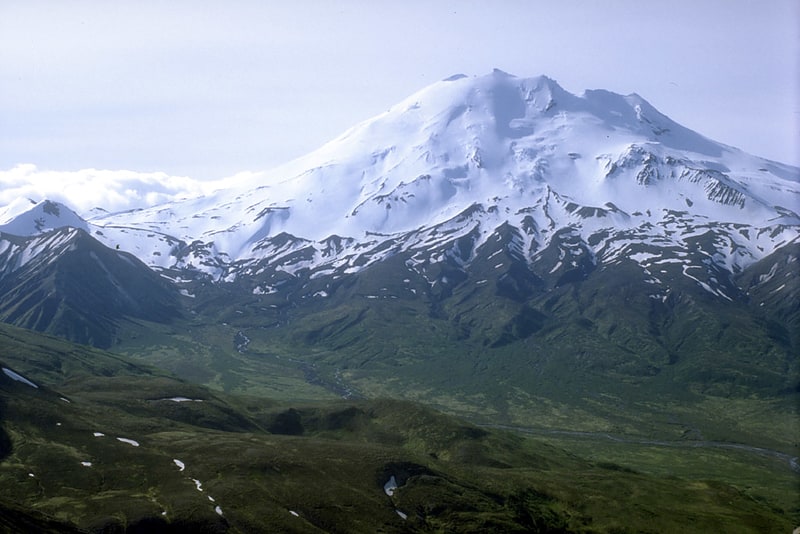
Stratovolcano in Alaska. Chiginagak Volcano is a stratovolcano on the Alaska Peninsula, located about 15 km NW of Chiginagak Bay.[5]
Yantarni Volcano
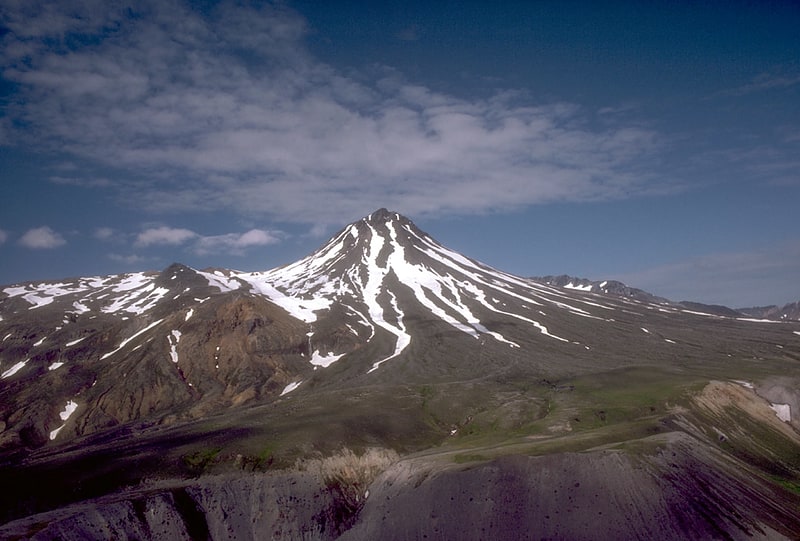
Stratovolcano in Alaska. Yantarni Volcano is an andesitic stratovolcano in the U.S. state of Alaska. It is on the Alaska Peninsula, in the Aleutian Range, between Mount Aniakchak and Mount Chiginagak volcanoes. The volcano was not discovered until 1979 due to its remote location, lack of documented historic activity, and its rather modest summit elevation. The mountain was named after nearby Yantarni Bay, which in turn was named by Russian explorers after the abundance of yantar in the area.[6]
Mount Emmons
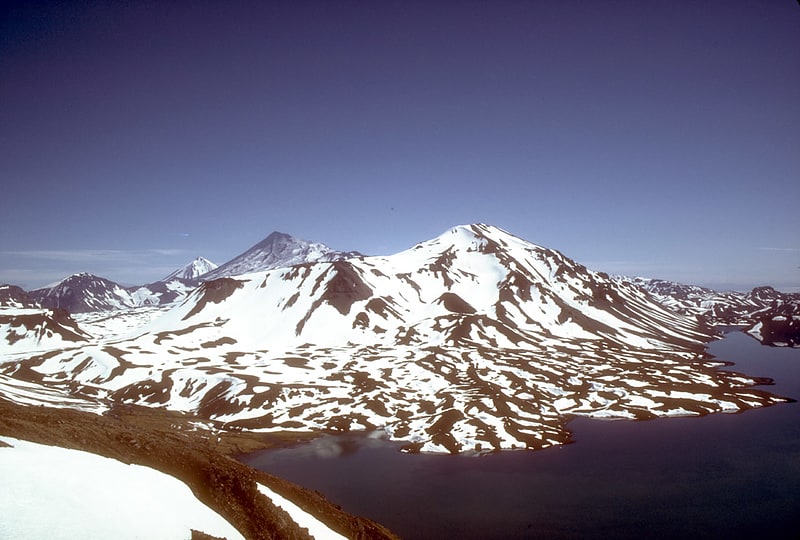
Caldera in Alaska. Mount Emmons is a post-caldera stratovolcano within the Emmons Lake caldera on the Alaska Peninsula within the Lake and Peninsula Borough, Alaska, United States.[7]
Mount Dutton
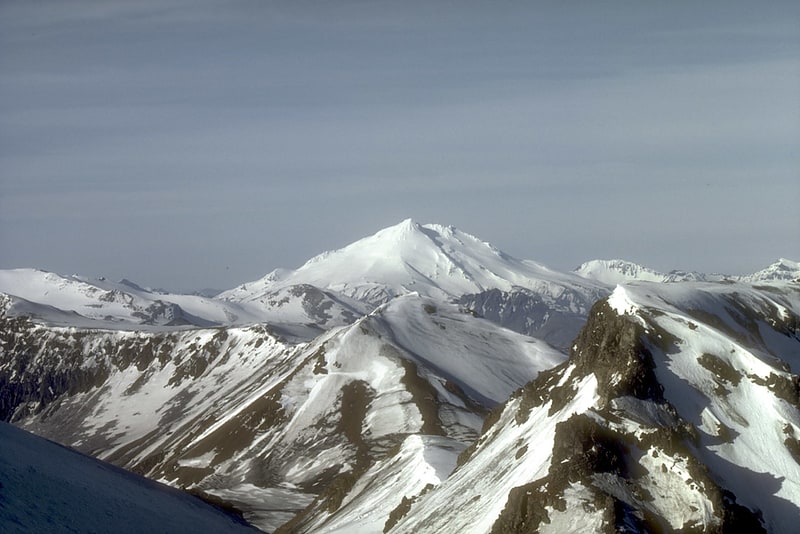
Stratovolcano in Alaska. Mount Dutton is a stratovolcano in the Aleutian Range of the U.S. state of Alaska, on the Alaska Peninsula.[8]
Mount Kialagvik
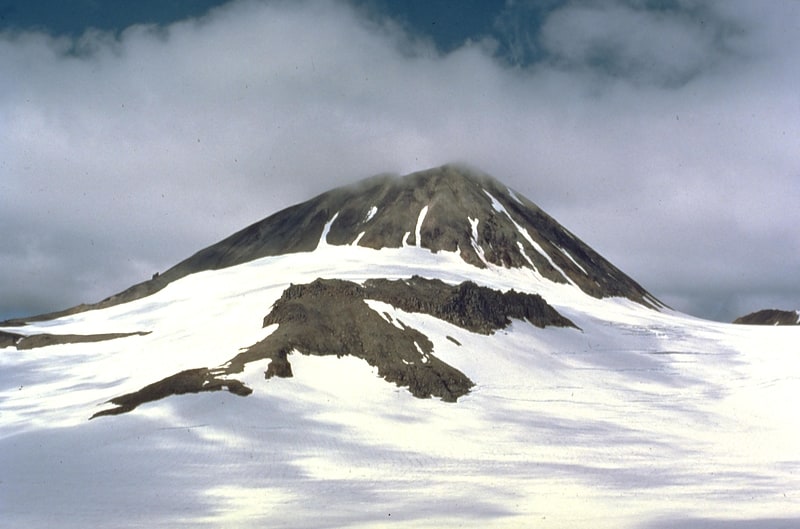
Stratovolcano in Alaska. Mount Kialagvik is a small poorly known stratovolcano on the Alaska Peninsula of Alaska, United States.[9]
Ugashik Lakes
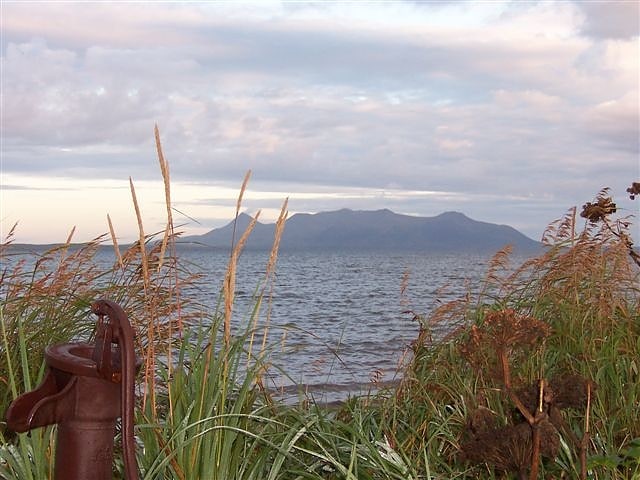
Lake in Alaska. The Ugashik Lakes are two adjacent lakes along the Ugashik River on the Alaska Peninsula in the U.S. state of Alaska.
The lakes are world-renowned for trophy Arctic grayling fishing. The lakes also support large concentrations of lake trout, provide key feeding habitat for large numbers of sockeye and coho salmon.
- Upper Ugashik Lake is 17 miles (27 km) long and located at the head of the river, south of Becharof Lake and 22 miles (35 km) northeast of Ugashik, at 57°40′22″N 156°41′20″W.
- Lower Ugashik Lake is 11 miles (18 km) long and located south of Upper Ugashik Lake, 14 miles (23 km) east of Ugashik, at 57°31′09″N 156°53′55″W.
Black Peak
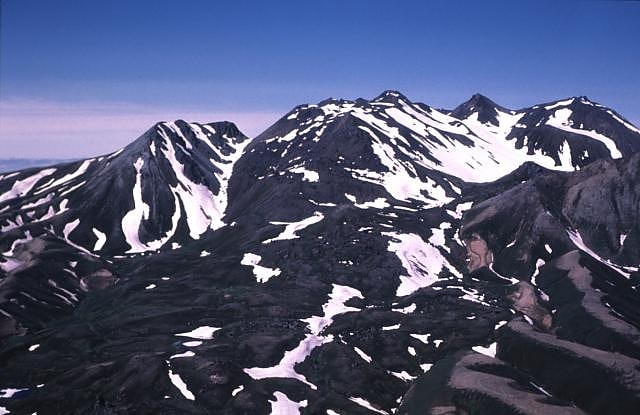
Stratovolcano in Alaska. Black Peak is a highly eroded stratovolcano comprising a lava dome complex on the Alaska Peninsula of the U.S. state of Alaska. Also called Black Volcano or Sopka Chornaia, the mountain is located within the Lake and Peninsula Borough.
The latest eruption from Black Peak less than 4,000 years ago produced an explosive VEI-6 eruption that created a caldera. Ash flow tuffs and block and ash flow deposits from this explosive eruption traveled down the Ash Creek and Bluff Creek valleys that reach depths of 100 m (328 ft).[11]